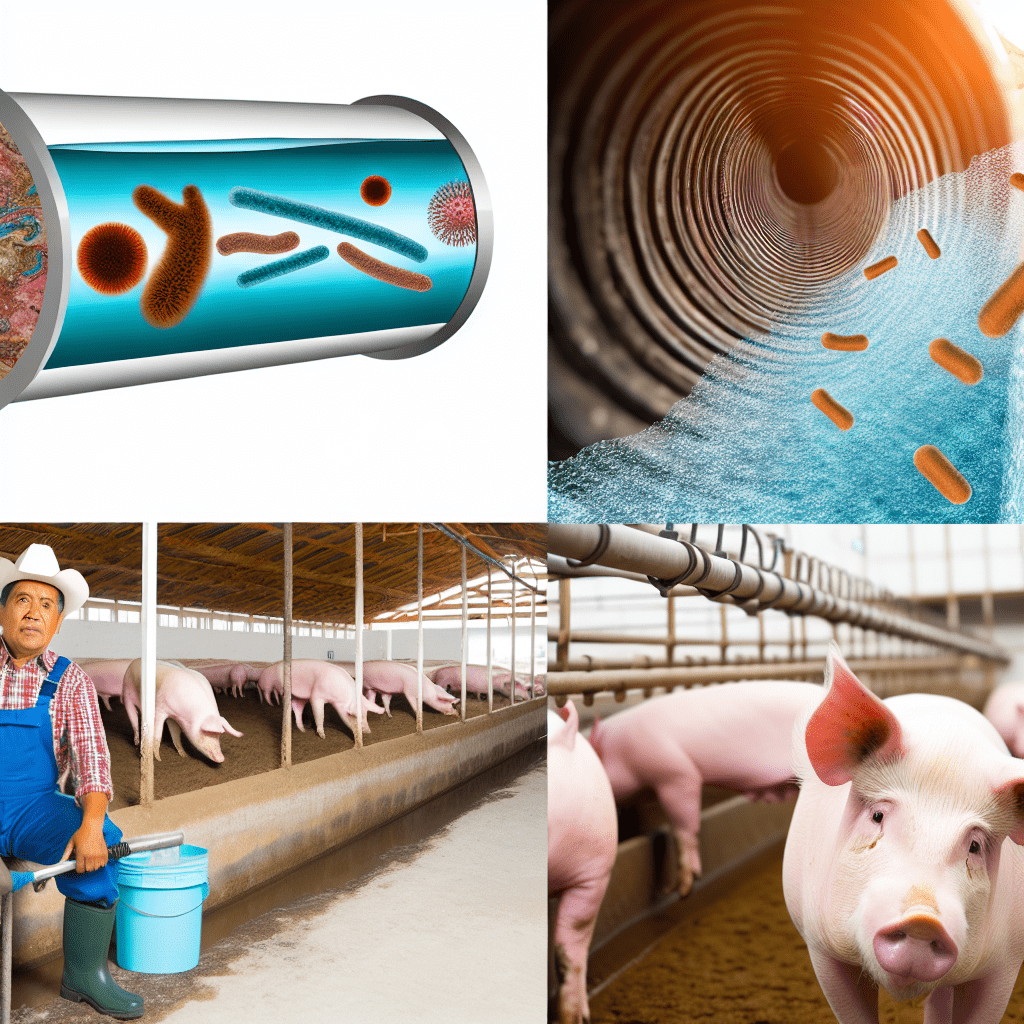Water plays a crucial role in maintaining the health and well-being of pigs on swine farms. However, it is important to recognize that water can also be a potential source of contamination if not properly managed. Biofilms, or layers of microorganisms that attach to surfaces such as water lines, can significantly impact water quality and pose a threat to the health of pigs.
Biofilms are formed by a variety of microorganisms, including bacteria, fungi, and algae. These microorganisms attach to surfaces and produce a sticky substance that allows them to stick together and form a protective layer. In water systems, biofilms can develop on the inner walls of pipes, valves, and other equipment, creating an ideal environment for the growth and survival of harmful bacteria.
One of the main concerns with biofilms in swine farms is their ability to harbor pathogens. Pathogens, such as E. coli and Salmonella, can survive and thrive within biofilms, making it difficult to completely eliminate them from the water system. This not only poses a risk to the health of pigs but also increases the potential for contamination of pork products.
Biofilms can also cause a decrease in water quality, making it less appealing for pigs to drink. This can lead to reduced water consumption and ultimately impact the growth and productivity of the animals. In addition, biofilms can also clog water lines, reducing water flow and creating an environment for bacteria to proliferate.
Proper management and maintenance of water systems is crucial for preventing and controlling biofilms on swine farms. Regular cleaning and disinfection of water lines and equipment can help to prevent the formation of biofilms. Using appropriate cleaning agents and techniques can also help to break down and remove existing biofilms.
In conclusion, biofilms in water systems on swine farms can have a significant impact on the health and productivity of pigs. It is important for farmers to be aware of the potential risks associated with biofilms and take necessary measures to prevent and control their growth. By properly managing water systems, farmers can ensure the safety and well-being of their pigs and the quality of their pork products.
Source: Role of Water and Water Line Biofilms in Swine Farm Biosecurity. (https://www.nationalhogfarmer.com/livestock-management/role-of-water-and-water-line-biofilms-in-swine-farm-biosecurity)

